-
 +28 +1
+28 +1Scientists have cloned the first US endangered species: A black-footed ferret that died 30 years ago
Scientists have cloned the first U.S. endangered species, a black-footed ferret duplicated from the genes of an animal that died over 30 years ago. The slinky predator named Elizabeth Ann, born Dec. 10 and announced Thursday, is cute as a button. But watch out — unlike the domestic ferret foster mom who carried her into the world, she’s wild at heart.
-
 +16 +1
+16 +1Chinese Scientists Have Cloned a Genetically Altered Primate For The First Time
This time last year, the first primates cloned through a nucleus transfer technique made headlines around the world. Now, Chinese researchers have pushed the envelope even further – by breaking a regulatory gene in macaques before cloning them.
-
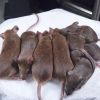 +10 +1
+10 +1Japanese Researchers Have Cloned 25 Generations Of Mice From A Single Mouse
It’s a good day for science and science fiction when Harold Ramis’ Multiplicity can finally be proven to be complete bullshit. And I’m …
-
 +13 +1
+13 +1Surprising reason why human cloning may produce someone else
“If I’m going to the trouble of cloning myself, I want the clone to be a copy of me!” I’m imagining what someone might say if they were told that their expensive and ethically dubious personal cloning efforts produced a clone that was somebody else instead of them. Even if the clone was very similar to the clonee, perhaps like a sibling who was nearly but not quite an identical twin, the clonee might be totally PO’d.
-
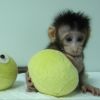 +17 +1
+17 +1Scientists have cloned a monkey in a huge world first
Two monkeys are the first ever primates to be cloned using the technique that created Dolly the sheep. The technique brings the prospect of cloned human beings even more closer. But scientists caution that there may be no good reason to create such clones, and that ethical and legal questions need to be answered about such research.
-
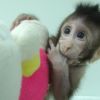 +29 +1
+29 +1Chinese Scientists Have Successfully Cloned Monkeys
Zhongzhong and Huahua are the first monkeys cloned by the same method that created Dolly the sheep.
-
 +18 +1
+18 +1With powerful new technique, scientists can clone thousands of genes at once
Scientists at Johns Hopkins, Rutgers, the University of Trento in Italy, and Harvard Medical School report they have developed a new molecular technique that can be used to isolate thousands of long DNA sequences at the same time, more than ever before possible. According to the researchers, the new technology—known as LASSO cloning—speeds up the creation of proteins...
-
 +36 +1
+36 +1Dolly the sheep clones age healthily
The sheep were found to be as healthy as naturally conceived animals. A study published today in Nature reviews the health of the four clones of infamous Dolly the sheep, the world’s first cloned animal which was born 20 years ago. Concerns were raised when Dolly died at the comparatively young age of 6.5 years old, however her clones have now all reached a robust nine years old without major health problems. The study’s lead author, Kevin Sinclair, told us more.
-
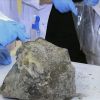 +50 +1
+50 +1Scientists Trying To Clone Ice Age Cave Lion
Scientists are attempting to find DNA in the remains of an Ice Age cave lion cub in order to clone the extinct animal. Two cubs were found in Russia's Sakha Republic last August. They were in a state of near-perfect preservation thanks to the deep-freeze conditions of the permafrost where they lay. Researchers hope to find living tissues containing DNA in the remains, which will allow them to recreate the now extinct Ice Age cave lion.
-
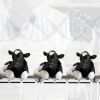 +2 +1
+2 +1This Mad Scientist Will Clone 100,000 Cows
This year, a Chinese company plans to open a massive factory to clone 100,000 cows. Just how far will this mass reproductive technology go? Two decades after the birth of Dolly the sheep—the world’s first successfully cloned mammal—the year 2016 will likely see the rise of mass-produced animal clones, thanks to an enterprising and madcap scientist in China.
-
 +31 +1
+31 +1British couple overjoyed at birth of second cloned puppy
A British couple have been celebrating after a second cloned puppy was born using DNA from their beloved pet dog who died earlier this year. Richard Remde and Laura Jacques from West Yorkshire paid £67,000 to have their boxer dog, Dylan, who died of a brain tumour in June, cloned. They provided tissue samples containing Dylan’s DNA in July, and were thrilled when they received the news last month that two pregnancies had been established in surrogate dogs.
-
 +3 +1
+3 +1China 'cloning factory' to produce cattle, racehorses and pets
The £21 million “commercial” facility will edge the controversial science “closer to mainstream acceptance”, Chinese media said, following the development of a technique which began when Dolly the sheep became the first cloned mammal when she was born in Scotland in 1996. The centre may cause alarm in Europe, where the cloning of animals for farming was banned in September due to animal welfare considerations.
-
 +46 +1
+46 +1China ‘cloning factory’ to produce cattle, racehorses and pets
World’s largest cloning facility in China aims to produce a million cattle a year, along with other animals. By Neil Connor.
-
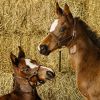 +25 +1
+25 +1How Champion-Pony Clones Have Transformed the Game of Polo
Perhaps the greatest polo player ever, Adolfo Cambiaso is planning to compete on a pony that died nearly a decade ago—a clone of his beloved stallion Aiken Cura. With more than 25 replicas of champion horses now in existence, Haley Cohen explores how the science came to polo.
-
 +13 +1
+13 +1Clone ethics: What shouldn't you do with your clone?
Do clones have souls? How about human rights? Can we kill our own clone? What happens if we... have sex with one? Hopes&Fears consults psychologists, geneticists, bioethicists, twin specialists, theological experts and a Raelian bishop to answer these ethical questions.
-
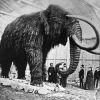 +16 +1
+16 +1The woolly mammoth is coming back from the dead
Scientists have spliced DNA from the woolly mammoth into living elephant cells, opening up the possibility of bringing back the long extinct animal.
-
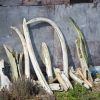 +18 +1
+18 +1This Bad-Boy Geneticist Wants to Clone a Mammoth
Hwang Woo-Suk the bad boy of genetics. He’s most famous for falsely claiming to have cloned human stem cells. This is, you can imagine, very bad in science. Yet last week, the South Korean researcher was in Siberia, drilling cells from the bones of a 28,000 year-old frozen wooly mammoth. The bones are the only place Hwang is going to find the DNA he needs to bring a mammoth back to life.
-
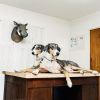 +2 +1
+2 +1For $100,000, You Can Clone Your Dog
Sooam Biotech brings cloning to China, has plans to save Korean cattle, and will clone your pet dog for $100,000
-
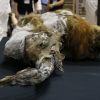 +25 +1
+25 +1Scientists have 'Good Chance' of Successfully Cloning 43,000-Year-Old Woolly Mammoth
Scientists have claimed they have a "good chance" of cloning a woolly mammoth which has been frozen for the past 43,000 years. The international team of scientists at the North-Eastern Federal University in Yakutsk, Siberia, believe they can extract DNA taken from the blood of the animal to mix it with that of an elephant.
-
 +1 +1
+1 +1Cannabis Cloning Tutorial, Realiably Get Roots in 7-10 Days
Get specific day-by-day instructions on how to get large cannabis clones to reliably root in just 7-10 days, tutorial written by Mr Green of www.GrowBCBud.com.
Submit a link
Start a discussion




















